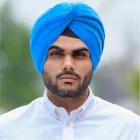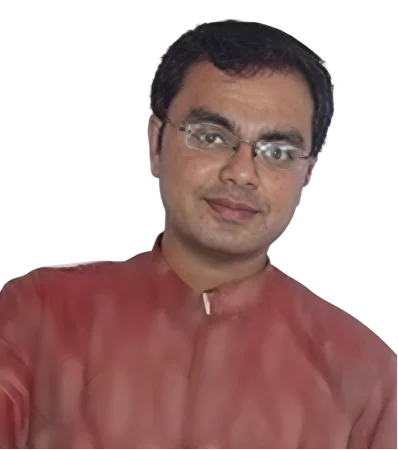Endovascular Surgery
Expert Treatment for Aneurysms, Blockages, and Other Vascular Conditions
Endovascular surgery is a revolutionary technique for treating cardiovascular conditions using minimally invasive methods. Instead of the traditional open procedure using guidewires, catheters, along with imaging techniques to reach the blood vessels and then treat them directly from inside. This cutting-edge approach speeds up the recovery time, eliminates complications, and offers effective solutions to conditions like blood clots, aneurysms and peripheral arterial disease (PAD). In Chirayu Super Speciality Hospital, our highly trained team of Interventional Radiologists and vascular surgeons are specialists in endovascular surgeries providing patients with modern treatments that are safer more minimally invasive and specifically designed to deliver the best outcomes.

What is Endovascular Surgery?
Endovascular surgery is a kind of minimally invasive procedure which is focused on treating vascular disorders with small cuts or punctures, most often within the arm or groin to place medical devices and catheters. With the aid of real-time imaging, surgeons use these instruments to navigate the blood vessels in order to fix or eliminate blockages, build up vessels that have been damaged or redirect the flow of blood. Endovascular procedures that are commonly used include the angioplasty procedure, stent placement embolization, stent placement as well as endovascular aneurysm repairs (EVAR). These procedures are commonly utilized to treat diseases which affect veins, arteries and lymphatic vessels making endovascular surgery a flexible and efficient option for a lot of patients.
Who Performs Your Surgery?
In Chirayu Super Speciality Hospital, endovascular surgery is carried out by a group of highly experienced interventional radiologists and vascular surgeons who are specialists in minimally invasive procedures. Our specialists are certified in the most advanced endovascular techniques and procedures, providing the highest quality of care and a positive outcome. The surgical team is in close collaboration with other health professionals, such as cardiologists, anesthesiologists, and nephrologists, in order to offer comprehensive, personalized care throughout the entire surgical procedure.
Types of Endovascular Surgery
- Angioplasty and Stenting : This involves inflating tiny balloons inside the artery that has narrowed or become blocked to increase its size and then putting it in the place of a stent in order to keep the artery free and allow the flow of blood.
- Endovascular Aneurysm Repair (EVAR) : EVAR can be used for treating abdominal aortic aortic aortic angioplasty by inserting a stent-graft in the aneurysm using an incision through a catheter, strengthening the vessel’s wall, which is weak and stopping rupture.
- Embolization : The method involves inserting material like coils or particles into blood vessels in order to block blood flow to certain regions and effectively treat conditions such as varicose veins, aneurysms and uterine fibroids.
- Thrombectomy : An operation to remove blood clots from arteries and veins with specialized catheters and devices. It is often utilized in the treatment of deep vein embolism (DVT) or embolism in the pulmonary tract.
- Atherectomy : Atherectomy is the process of removal of plaque from the interior of blood vessels with the use of a catheter with the rotating blade, or laser. It is usually used to treat patients suffering from serious PAD and coronary artery diseases.
- Carotid Artery Stenting : The procedure is used to treat carotid artery narrowing by placing the stent in order to prevent strokes in patients with high risk of the traditional carotid endarterectomy.
Symptoms Indicating the Need for Endovascular Surgery
- Extreme leg pain and cramping or heaviness caused by obstruction of the blood vessels (Peripheral Artery Disease).
- The presence of abdominal or thoracic aortic aortic aneurysm diagnosed by imaging.
- Wounds that are not healing or ulcers on feet or legs due to inadequate circulation.
- The symptoms of stroke or symptoms of transient ischemic attack (TIA) because of carotid artery narrowing.
- Blood clots form in veins, causing swelling, pain and a risk for pulmonary embolism.
- Varicose veins cause discomfort, swelling or even skin ulcers.
Diagnosis for Endovascular Surgery
The process of diagnosing vascular issues that could require endovascular treatment typically requires an exam, medical history review as well as advanced imaging methods. Diagnostic tests that are commonly used include ultrasonography, CT angiography, MRI and standard angiography. These tests allow you to see blood flow, identify abnormalities or blockages, and identify the location and size of aneurysms as well as other issues with vascular health. Based on the findings of the diagnostic tests the vascular surgeon will design an individual treatment plan that is tailored to the patient and recommend the best endovascular procedure.
Treatment Process
The process of treatment begins by having a discussion with a vascular surgeon to discuss the diagnostics, treatment options and the procedure. Endovascular surgery is generally performed in a specially-designed operation room or catheterization laboratory equipped with cutting-edge imaging technology. The procedure is generally performed under local anesthesia, either general or local anesthesia dependent on the degree of complexity. A tiny incision or cut is created in order to allow blood vessels to be accessed, and then a catheter is placed. Utilizing real-time guidance from an imaging system the surgeon guides the catheter towards the area affected to carry out the required procedure, like placing an stent, placing an stent-graft or an encapsulated bleeding clot. The whole procedure could take up to a few hours, based on the particular situation.
Care and Recovery After Surgery
The healing process after endovascular surgery tends to be faster and less painful than conventional open surgery. The majority of patients are able to return home on the same day, or following brief hospitalization. Post-operative care involves monitoring vital indicators, ensuring that the access site is in good condition and heals well, and addressing any discomfort that is caused by prescribed medication. It is recommended that patients refrain from vigorous activities for a couple of days, and then gradually return to normal routines as directed by their doctor. Regular follow-up visits are necessary to assess the efficacy of treatment, look for signs of complications, and make any adjustments to the treatment plan of the patient.
Advantages of Choosing Our Surgery Services
Minimally Invasive Techniques
Our endovascular procedures are designed to minimize pain, reduce the risk of complications, and promote faster recovery.
Highly Skilled Specialists
Our team of vascular surgeons and interventional radiologists are experts in endovascular techniques, ensuring precise and effective treatment.
Comprehensive Care
From diagnosis to post-operative follow-up, we provide a holistic approach to vascular care, focusing on patient safety and satisfaction.
What Our Patients Say
Read about our patients positive experiences and how Chirayu Super Speciality Hospital has positively impacted their health and well-being.


The care and expertise at Chirayu Hospital gave me a new lease on life. Endovascular surgery was the right choice for me.


I was nervous about surgery, but the endovascular method was safe, and I had no complications. Great experience!


The doctors and staff at Chirayu were amazing. They explained everything about my aneurysm repair and took great care of me.


After my endovascular surgery for PAD, I was up and moving in no time. The procedure was quick and effective!
Meet Our Medical Specialists
Our expert vascular surgeons specialize in advanced endovascular techniques, offering minimally invasive solutions for a range of vascular conditions.
Frequently Asked Questions
Here, we provide answers to some of the most commonly asked questions to help you better understand about our surgery services. If you have any additional questions, please do not hesitate to contact us.
Conditions such as aneurysms, peripheral artery disease (PAD), blood clots, carotid artery stenosis, and varicose veins can be treated using endovascular techniques.
The procedure is generally less painful than open surgery. Local anesthesia or sedation is used to minimize discomfort.
Risks may include bleeding, infection, blood clots, or damage to blood vessels. However, the minimally invasive nature of the procedure reduces these risks.
Endovascular surgery is a minimally invasive procedure that uses catheters and imaging technology to treat vascular conditions from within the blood vessels.
Recovery time is typically shorter than traditional surgery. Most patients can return to normal activities within a few days to weeks.



